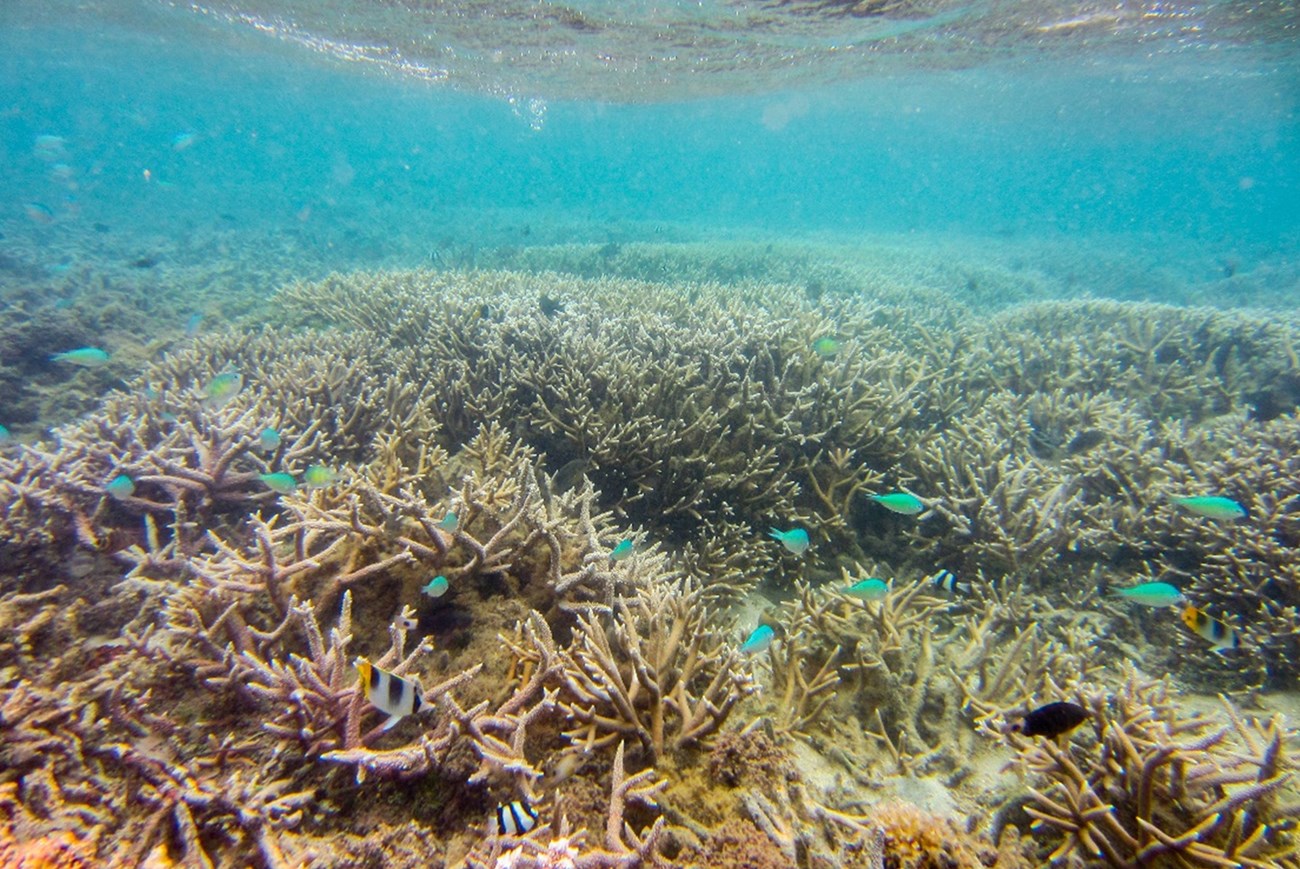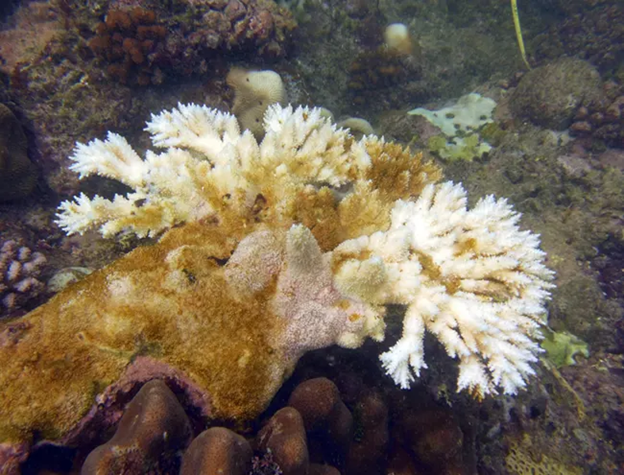Last updated: January 20, 2025
Article
Keeping Color in the Corals: Research Informs Decisions at War in the Pacific National Historical Park
By Summer Boulais, I&M Science Communicator
June 2024
Imagine snorkeling through a vibrant coral reef surrounded by a kaleidoscope of colors. Schools of fish are dancing in and out of the strong, healthy structures. Now, envision a desolate and faded coral reef with an eerie silence in place of where marine life once thrived. This is what happens when coral reefs succumb to the environmental stressors they’re currently up against.
June 2024
Imagine snorkeling through a vibrant coral reef surrounded by a kaleidoscope of colors. Schools of fish are dancing in and out of the strong, healthy structures. Now, envision a desolate and faded coral reef with an eerie silence in place of where marine life once thrived. This is what happens when coral reefs succumb to the environmental stressors they’re currently up against.

NPS
Ecosystems made up of reef-building corals play a crucial role in the lives of both sea creatures and people. Despite being living creatures themselves, corals are home to many marine species which allows biodiversity to thrive. Coral reefs buffer the shoreline from incoming storms and large waves, protecting people onshore from wave energy, storm surge, and coastal erosion. At places like War in the Pacific National Historical Park (NHP), in Guam, they also provide recreational swimmers and divers with incredible opportunities to see the wonders of marine ecosystems for themselves.

NPS
One thing we can do to help coral reefs is to lessen our impacts as humans on the land. The coral reefs in Guam face threats derived from land-based pollution and erosion. Proper watershed management and waste disposal are critical for the future of Guam’s corals. Working hard to reduce waste and spread the word on the importance of protecting corals can have immediate positive impacts.
One management technique being explored to help coral reef health is planting heat-tolerant corals raised in nurseries. There are currently two coral nurseries in Guam. Researchers raise coral fragments until they can be replanted in areas where coral need to be reestablished. This can help coral reefs recover and become more resilient against warming temperatures. However, park managers need information on the status of the coral reefs before implementing strategies and taking action. For example, planting nurseries in areas where corals are already struggling to adapt to erosion may result in unsuccessful nurseries.
One management technique being explored to help coral reef health is planting heat-tolerant corals raised in nurseries. There are currently two coral nurseries in Guam. Researchers raise coral fragments until they can be replanted in areas where coral need to be reestablished. This can help coral reefs recover and become more resilient against warming temperatures. However, park managers need information on the status of the coral reefs before implementing strategies and taking action. For example, planting nurseries in areas where corals are already struggling to adapt to erosion may result in unsuccessful nurseries.

NPS/Burdick
At War in the Pacific NHP and other places around the globe, threats coral reef systems face can seem almost overwhelming. This research helps keep those vibrant hues alive to provide marine species a home to thrive in. With continued monitoring and proactive management efforts, we can help mitigate threats and strive to preserve these crucial ecosystems and their beauty.
